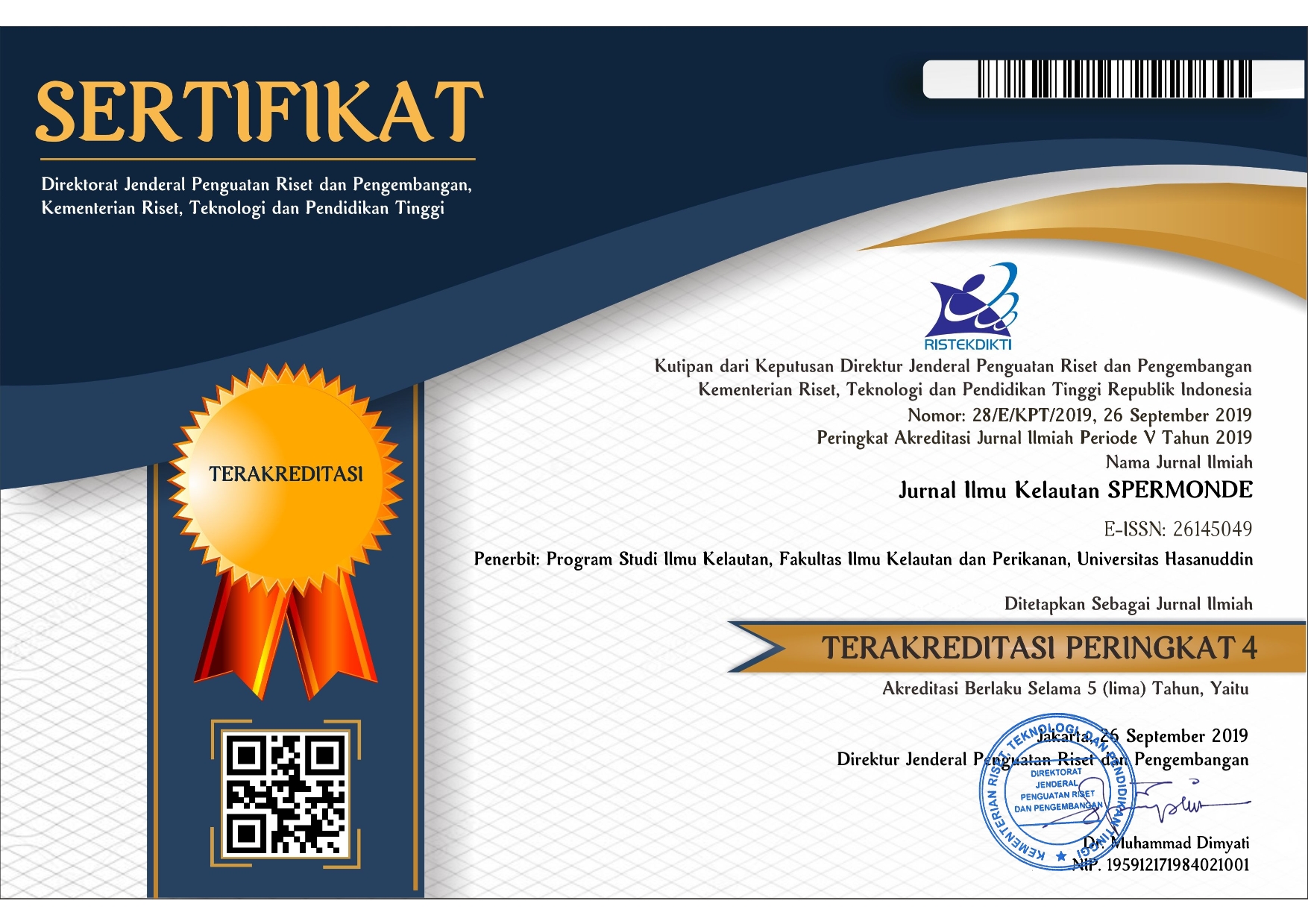PREFERENCE OF SPONGE PREDATORY FISHES ON CORAL REEF ECOSYSTEMS WITH DIFFERENT ENVIRONMENTAL CONDITIONS ON HOGA ISLAND, WAKATOBI
DOI:
https://doi.org/10.20956/jiks.v10i2.19141Keywords:
sponge, coral reef, environmental parameter, predatory sponge fish, Hoga IslandAbstract
Degradation of coral reefs due to changes in environmental conditions causes corals to experience a decline in the number of organisms. Sponges, one of the components that make up the coral reef ecosystem, are known for their adaptability. Thus, the role of spongivore as distribution controllers is essential to assess. This research aims to determine the relationship between hard coral cover and sponge cover, the relationship between environmental parameters and sponge cover, and the preferences of predatory sponge fish. This research was conducted in July 2018 on Hoga Island, Wakatobi, by taking two stations with different conditions between clear and turbit water. At each station, benthic cover data was collected using the LIT (Line Intercept Transect) method, and environmental parameter data was collected using CTD (Conductivity Temperature Depth) and sediment traps. Predatory fish abundance data was collected using the belt transect and UVC (underwater visual census) methods, and the preferences of predatory fish were observed with visual observations for 5 minutes. The research results found that hard coral cover and sponge cover had an inverse relationship. Environmental parameters that significantly affected sponge cover were turbidity and sedimentation rate and high preference values for spongivore fishes.Downloads
Download data is not yet available.
Downloads
Published
2024-08-05
Issue
Section
Articles
License

This work is licensed under a Creative Commons Attribution-NonCommercial 4.0 International License.

This work is licensed under a Creative Commons Attribution 4.0 International License










